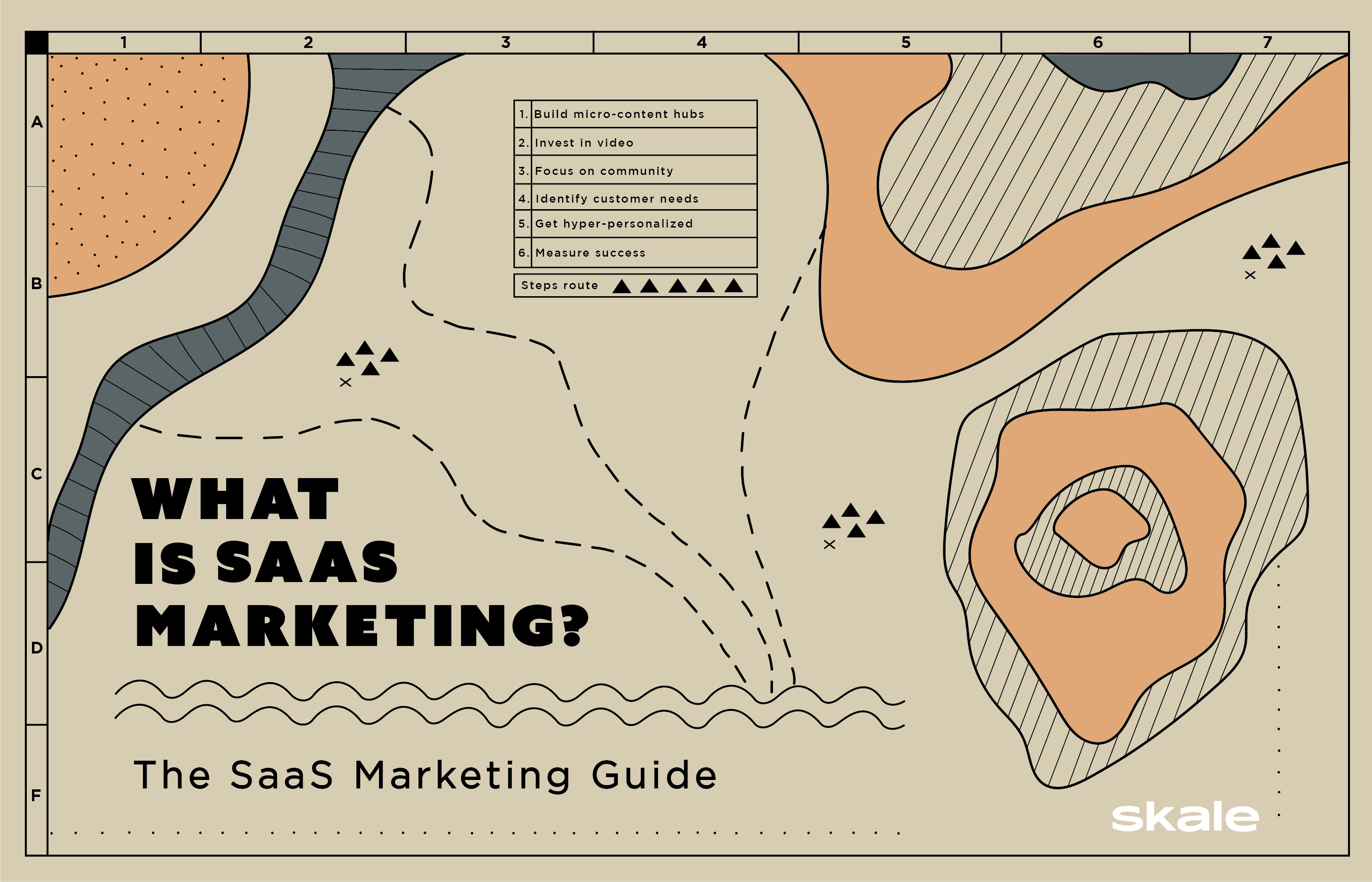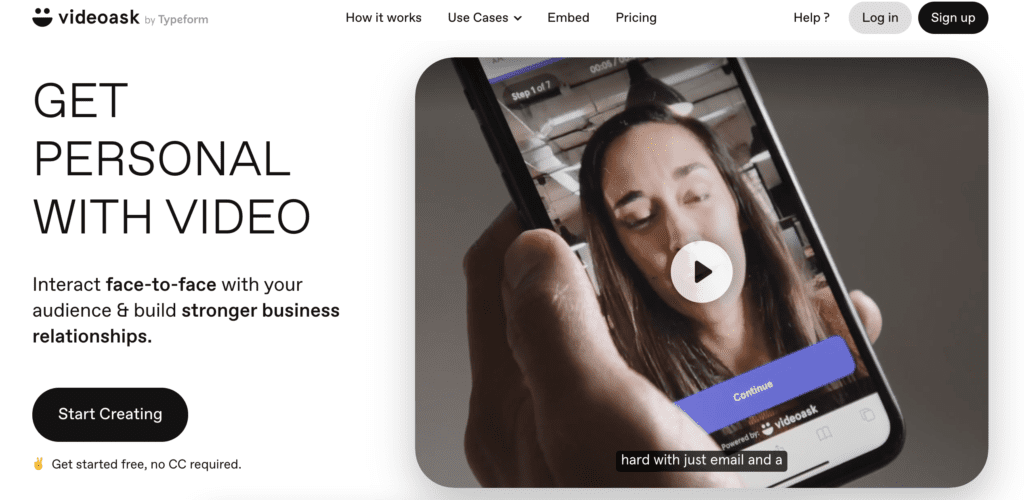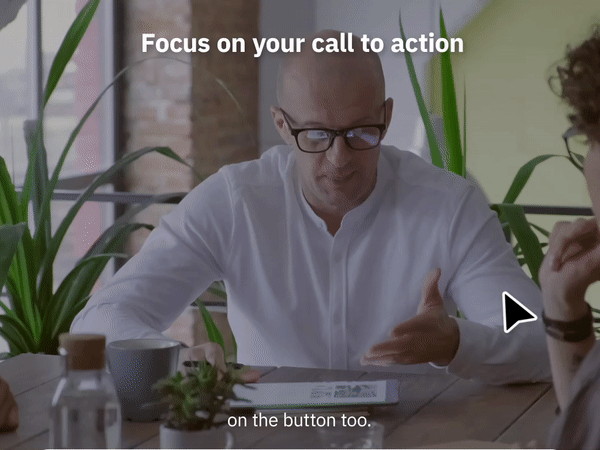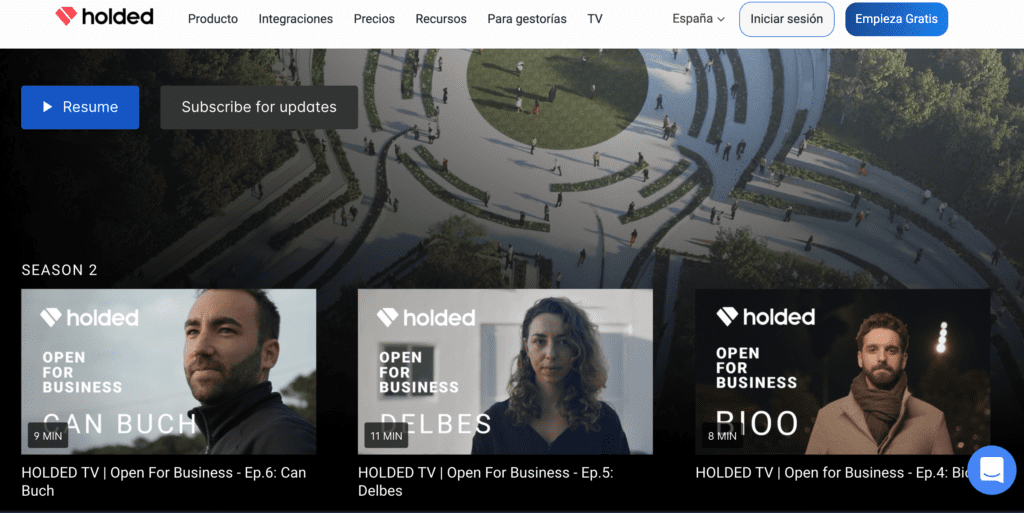
The best 8 SaaS marketing events to attend in 2024
In this comprehensive guide, we'll showcase some of the best SaaS marketing events in 2024 that you shouldn't miss.

So you’re in the SaaS marketing world and are looking for some advice on ramping up your marketing strategy efforts and providing better results for your SaaS business? Well, you’ve come to the right place. We’ve put together this marketing guide using a collection of experts from SaaS companies across the globe and our own in-house knowledge.
We’re about to share how you can build better marketing strategies for your SaaS business in 2024. These are SaaS content marketing and other business marketing strategies and tactics you can implement today to start seeing an increase in product signups, and ultimately sales.
Put the kettle on; this one’s a winner.
SaaS marketing is a type of marketing that specifically helps build awareness and promote software as a service products. SaaS marketing helps to bring a product to a market, position a product, and build awareness around a SaaS organization.
This article acts as a signpost piece to greater, in-depth strategies for SaaS companies. Browse through this one, as each point will cover the basics and give you a bite-sized taste of what the larger strategy involves.
If you want more on the topic, then click through to the relevant article and get deep into the thick of the strategy you think will work best for your business. Every time you see a 🧐 emoji, you’ll find a link to learn more on the topic! Enjoy.

You may be familiar with Jake Stainer’s advice to “delete your blog.” You read it right, delete that blog and replace it with a magazine. The whole concept of magazine content over blog content will elevate the content you’re building and the relevant topics you’re choosing to become experts on. You can read more about building magazines here. 🧐
However, microsatellite content hubs take the magazine content build idea a step further. Why build one magazine when you can build multiple? Have each magazine focus on a core topic you want people to come to your SaaS business for.
“One thing that we found really effective at Atlassian is what I call Microsatellites. These are basically content hubs that revolve around a topic. They live on the website, but they have their own UX, their own look and feel. They’re kind of like a content world that is a little isolated from the rest of the website—it works very well.”
—Kevin Indig, Director of SEO at Shopify.
These microsatellite content hubs, or magazines, can pertain to elements of your brand but are hyper-focussed on a core area of knowledge, so it may make sense to allow them to drift a little in their UX, UI, and even core branding.
You’re essentially building content areas that appeal to different buyer personas and ICPs, so feel free to address these types of people not only in the content topic but in the way you portray your content in the first place.
Read more on building customer personas for SaaS companies in point number six of building a SaaS marketing playbook. 🧐
For example, perhaps you’re writing for CEOs or CMOs to build awareness of your SaaS brand among leadership teams. These types of roles are notoriously busy, so long-form content will be skimmed, or missed altogether. In this case, you’ll want to deliver your expertise in bite-sized snippets. Perhaps videos or even 5-minute podcasts are best for these busy people.

Video marketers get 66% more qualified leads per year, and nearly eight out of ten people have purchased software from SaaS companies or an app after watching a brand’s video.
However, video is also notoriously time-consuming to put together. Whether you’re outsourcing your video creation efforts or running them in-house, if you don’t have a distribution strategy for your videos, all of that effort is thrown to the wind.
You’ll have heard it before, but Youtube is a fantastic place to build out a video marketing strategy for SaaS businesses, with over 2 billion logged-in active users each month. It’s particularly effective if you treat the platform as an FAQ for your industry niche. For example, for us here at Skale, we could focus on answering the following questions with video in our content marketing strategy:
Building awareness:
Getting service-specific:
Youtube is a fantastic way to go for an inbound marketing strategy as your videos stand a chance of ranking on Google.
Try to steer clear of building video marketing material if it’s only going to sit on social media. Think of evergreen content and build video with as much keyword strategy as you would your blog magazine.
Secondly, if you’re not building videos for search, then distribute them with every opportunity to be seen. Try to see where videos can fit into your sales funnels, email journeys, and especially your PPC landing pages.
“Have videos on your landing pages. These can be product-focused videos or just video content in general (testimonials, about us, case studies).
We’ve found that videos and landing pages work really, really well together—especially from an SEO perspective, from the user experience perspective, and from an engagement perspective.”
—Kevin Indig, Director of SEO at Shopify.

Of course, your video strategy will depend on your business model (free trial offer, customer acquisition strategy, self-served or sales-led, etc), your target audience, value proposition, product, and so much more. Define a video strategy that’s the best fit for your business.
Never underestimate the power of a strong community. Even from day one of your SaaS brand, you should be looking to build and foster a community. Whether that’s a handful of people, or thousands, your community is only as strong as its skeleton members.
We’re doing something similar here at Skale. The idea emerged organically as we began to see clients, and friends in the B2B SaaS world wanting to connect over their passion for building SaaS products.
These people have a wealth of knowledge to share, and at the same time are constantly looking to expand their own knowledge base. We thought: ‘we’re in a unique position to build something here,’ so we did. We put our feelers out there and invited a handful of people to join what we now call: The SaaS Collective.
The SaaS collective started with six members and has since grown to thirty or so. Everyone in it has a unique experience with building and marketing SaaS products, and a few of them feature in our articles.
We don’t know how far we’ll take the SaaS Collective yet, but it’s proving to be a strong, loyal community growing alongside Skale. Talking of its members, take a look at what Holly Chen— Marketing Advisor @ Loom, nTopology, Miro, ServiceNow, and ex Global Head of Digital Marketing @ Slack—had to say on building community.
“One strategy that I think many SaaS companies overlook is Community Strategy. A lively and engaged community is a result of customer love and further strengthens the connection of users, developers, partners, and prospective customers with the company.
The goal of the community is not to top-down push the company’s agenda or to serve as another channel to announce the company’s latest product release. Rather, to foster a sense of belonging and pride in connection with the product or industry niche, as well as providing the resources for the community members to be successful.”
Building a community is one thing, however managing, engaging, and keeping that community rife is something else entirely. You’re not building a list of emails here, you’re building connections, and that takes some serious strategy.
Find those who are strong advocates for the product and have strong desires to lead local communities. Only having company employees as community managers incurs high overhead costs and is not realistic—especially considering the global nature of many communities.
Enable members within the community to connect. When members jump in to help each other and answer each other’s questions, rather than waiting for the community managers to do so, it’s a good sign that your community is starting to thrive. However, you need to enable them to help each other in the first place.
“Leverage your users to create user-generated content. Work with your partners and experts to help you scale content production and bring authority to all of your content.”
Bozena Pieniazek— Director of Marketing @ Maze
Marketing trends come and go as technology and preferences change. However, your SaaS brand and marketing strategy can always rely on peoples’ basic need to connect. When you enable that over a common interest, you’re on to something that can increase ROI by 4,530% or more.
Your customers are humans. They have needs that go far beyond your product, whether that’s with their business and professional lives or with their personal endeavors and relationships. You’re not marketing to customers; you’re marketing to human beings, people just like you.
Put some time into researching your current product user base. This is not your ideal demographic or customer profile. Put time into researching the users that are with you right now. Who are those people? Do you notice any trends among them?
Go beyond that and ask them what their needs are outside of your product. What are they struggling with when it comes to managing their business or even their mental health? Once you’ve identified the needs of these people outside of what you offer, try to match things your SaaS company can offer to meet those needs while remaining in line with your mission and vision.

You can’t boost MRR without understanding your current ROI – that’s why we created this guide
Read the guide“The best is to understand what your customers need beyond your product, something that complements the product. For example, a new way of being/ doing stuff. Then define how you can achieve that through all the other touchpoints in the user journey.
At Holded, for example, our users are SMBs that want to take control of their business. Our easy-to-use business management software helps them manage all the aspects of their business, from invoicing, accounting, project management to CRM, inventory, and HR management, and streamline most processes.
However, we want to help them truly get control of their business beyond just using our tool. In this sense, this year we started creating a series of video documentaries about the entrepreneurial journey of the people behind these SMBs—especially in a tough year.
After testing a few concepts, we now decided to invest much more in this approach in 2021 and create Holded TV.”
—Adelina Peltea, VP of Growth at Holded.

Identifying customer needs can take your business down new paths; as long as those paths are still heading in the right direction, then that’s okay.
Don’t lose sight of your core product and mission. However, if you can meet needs beyond your product, you’ll start building a broader customer base, strengthen your current customer base, and may find business or product development opportunities to chase in the future.
New SaaS tools are constantly emerging and evolving to help you get more efficient with your SaaS marketing. We discuss some of our favorite Saas marketing tools to hyper-scale your business here. 🧐
Specifically, there are some great tools to help you target your advertising efforts better and deliver customized sales flows depending on personas and user needs.
“I think the past few years have taught everyone to be a lot more efficient with the things they’re doing. And it’s hypercritical that they’re super, super-targeted in their approach.
For example, let’s look at ad campaigns. How are you using intent data to really get targeted around who you’re going after? Or are you using data scrapers to find out what technology they’re using and adapting your go-to marketing strategy for that? I think efficiency, targeting, and personalization are things to focus on right now.”
—Adam Goyette, VP Marketing at Help Scout.
If you think your marketing efforts are personal now, how can you elevate them? Try to build flows and content variations that speak better to the personas you’re targeting.
Keep in mind that not every potential customer needs to enter the same flow. For example, if you’re marketing to someone in a 10-person startup, there’s a high chance they’ll want—and be in a better position to—move through your sales process much quicker than someone in an enterprise that will need to get multiple approvals to get your SaaS product on board.
Your targeting and personalization needs to be end-to-end. From awareness PPC campaigns right through to customer success and onboarding flows. It’s so much more than using a first name!
Success can mean many different things. It can also choose to reveal itself in countless different ways. So, what does success look like for your marketing efforts? And, what does success look like for your marketing team?
Work with sales and leadership to identify ways that marketing can support conversions later in the funnel. Once you’ve identified these goals, you can start setting KPIs to help identify if your marketing strategies are helping or hindering your efforts.
“Some of the best practices that I’ve kind of learned over the past couple of years is defining how you’re going to measure success. I think it’s easy to get into the flow of just producing content, but not actually assessing the impact it has.
So, once you’ve defined the purpose of your content, you’ll be able to clearly define metrics for success. I think there needs to be metrics for success, regardless of what your content focuses on.
Defining success is more obvious on the organic acquisition side, but, when you’re focusing more on thought leadership content, it’s often easy to forget about the impact or forget to forget about how to measure that. But, I think it’s equally as important to think about what success looks like on the top of the funnel as the bottom of funnel.”
—Bożena Pieniazek, Director of Marketing @ Maze.

See how top SaaS brands measure success
We’ve listed incredible SaaS marketing campaigns & what you can learn from them
Read the listWhen marketing people think about content they tend to jump straight to blog. Stop right there, thank you very much. There’s plenty of content types out there and it’s only growing as new technology and content sharing methods emerge. Let’s list a few:
We’re stopping there, but there’s so much more to consider. Sure, you can look at what your competitors are doing and try to trump that. But, what aren’t they doing that could work for your niche?
“I would recommend people to think about all of the different types of content out there and how they can help you achieve your goals from the top of the funnel to the bottom of the funnel.
Content like landing pages and downloadable templates, for example, they’re content too, and they can have a huge impact on growth.”
—Bożena Pieniazek, Director of Marketing @ Maze.
So take your SaaS marketing goals and identify content creation and distribution strategies that can help you achieve those goals, stand out, and stay evergreen among your ICPs.
“I would also recommend thinking about how your content is going to stand out and be unique? There’s a lot of content out there these days. Every sales company is producing content, and I think it’s important to think about why people should consume your content—what makes your content special?
If you don’t think about that and if you don’t really have anything that makes your content special, no one’s going to read it, and then it’s just a waste of production time.”
—Bożena Pieniazek, Director of Marketing @ Maze.
We’ve gone into a lot more detail, specifically on content marketing for SaaS businesses in our article: The Complete SaaS Content Marketing Strategy Guide. 🧐
It’s time to rethink your acquisition strategy and with it your acquisition costs. A healthy SaaS marketing plan is a sustainable one. It’s one that takes into account your sales cycle, customer life cycle, and customers’ jobs to be done.
When you start building marketing teams and strategies focussing around extending CLTV, you’ll start building products and businesses that bring a month-on-month higher return on investment. It starts here.

We explain how your next P&L statement can provide the tools to drive long-term growth without limiting resource allocation
Read the guideSoftware as a Service (SaaS) marketing is essentially the way you build awareness and help to sell software. SaaS marketing agencies or internal experts are crucial for product-led business growth. SaaS marketing helps to bring a product to a market, position a product, and build awareness around a SaaS organization.
SaaS Marketing involves most digital marketing elements; however, it can also utilize more traditional ATL marketing methods like offline events and print.
SaaS Marketing also tends to focus on long-term customer conversions. Rather than one-time purchases, SaaS marketers are often trying to generate new MRR.
You can measure the success of SaaS marketing efforts using some of the following metrics:
– LTV:CAC ratio
– Signups to paid conversions
– Churn Rate
– Net Promoter Score (NPS)
There are plenty more metrics to watch; you can read a deeper dive into them in our article on SaaS Marketing Metrics. 🧐
The most important SaaS marketing channels largely depend on your product, your ICP, and your marketing goals. However, a few consistent favorites are:
– SEO: For lead acquisition. Psst. This is our forte, and we talk more about SaaS SEO marketing here. 🧐
– PPC: Pay-per-click advertising on Google for driving product signups & MRR
– Linkedin & Twitter: for brand building and lead acquisition
– Email Marketing: for lead nurturing and conversion. Read more on methods to win at SaaS email marketing here. 🧐
– Podcasts: For brand awareness & website click-throughs
– Youtube: For brand awareness, customer retention, and retargeting
Look no further! Want to know the top SaaS marketing strategies jump back to the top of this article and enjoy our experts’ opinions on how to market your SaaS product to success.
Learn more about
SaaS Marketing

The best 8 SaaS marketing events to attend in 2024
In this comprehensive guide, we'll showcase some of the best SaaS marketing events in 2024 that you shouldn't miss.

7 Best SaaS Copywriting Agencies & Services in 2024
11+ SaaS copywriting agencies that will educate your audience, boost revenue, and nurture leads.

9 SaaS Content Marketing Agencies in 2024: Reviews & Pricing
Create content that generates serious revenue when you work with a SaaS marketing agency from this list.